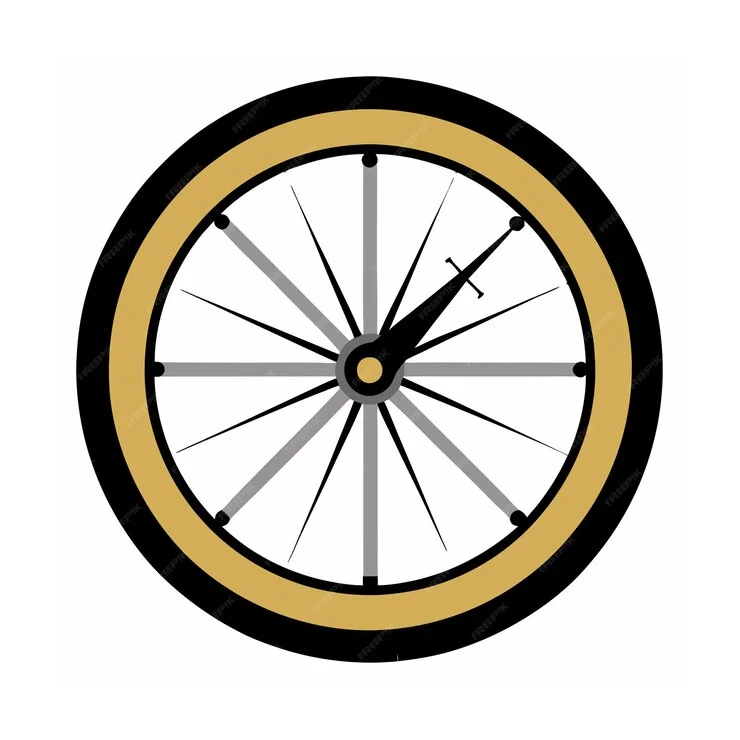When discussing bicycle wheels, one crucial element that often comes up is the bicycle wheel circle radius NYT. This measurement is pivotal in determining not only the bike’s performance but also the impact it has on comfort and stability. Interestingly, the concept of wheel radius also finds its way into more abstract areas, such as crossword puzzles. This article will explore the significance of the bicycle wheel circle radius NYT, its implications for cycling performance, and how it relates to crossword puzzles, particularly those in the New York Times (NYT).
The Importance of Bicycle Wheel Circle Radius NYT
The bicycle wheel circle radius NYT plays a fundamental role in the overall performance of a bike. The radius of a bicycle wheel is the distance from the center of the wheel to its outer edge, directly impacting various aspects of cycling.
Performance Implications
A larger wheel radius generally translates to higher speeds. This is because a larger wheel covers more ground per revolution, making it ideal for road cyclists who seek speed and efficiency. Conversely, smaller wheels offer better maneuverability. They are preferred by cyclists who need to navigate tight corners or uneven terrain, such as in mountain biking.
Comfort and Stability
The radius of the wheel also affects ride comfort. Larger wheels roll over obstacles like bumps and potholes more smoothly than smaller ones. This can significantly enhance comfort, especially on rough or uneven surfaces. Smaller wheels, while less comfortable over rough terrain, provide better control and agility, which is beneficial for more technical rides.
Types of Bicycle Wheels and Their Radii
Different types of bicycles come equipped with wheels of various radii, each designed for specific purposes.
Road Bike Wheels
Road bikes typically feature wheels with a radius of approximately 27 to 30 inches. These wheels are designed to be lightweight and aerodynamic, optimizing speed and efficiency on smooth, paved roads.
Mountain Bike Wheels
Mountain bikes use sturdier wheels with radii ranging from 26 to 29 inches. These larger wheels are designed to handle rough, uneven terrain, providing better shock absorption and stability.
Hybrid Bike Wheels
Hybrid bikes offer a compromise between road and mountain bike wheels. With radii usually around 28 inches, they provide a balance of speed and comfort suitable for both paved roads and light off-road paths.
Specialty Wheels
Specialty wheels include those for BMX bikes, which are smaller, around 20 inches, enhancing maneuverability and control during tricks. Touring bicycles may use larger wheels, sometimes reaching up to 700C (approximately 29 inches), for stability over long distances and loaded gear.
How to Measure the Radius of a Bicycle Wheel: A Step-by-Step Guide
Measuring the bicycle wheel circle radius NYT is a straightforward process. Here’s a simple guide to ensure you get an accurate measurement:
-
Prepare the Bike
Place your bike on a flat surface to stabilize it. This will ensure that the wheel is not under any additional pressure or load.
-
Measure the Diameter
Using a tape measure or ruler, lay the tape across the wheel from one edge to the opposite edge. Ensure it is straight and level to get an accurate diameter measurement.
-
Find the Center Hub
Locate the center hub of the wheel. Measure from this central point straight out to the edge where you previously measured the diameter.
-
Calculate the Radius
The distance you measured from the center hub to the edge is the radius. Since you already measured the diameter, divide it by two to get the radius.
-
Repeat for Accuracy
For greater accuracy, repeat the measurement two or three times and average the results if necessary.
Factors to Consider When Choosing the Right Wheel Radius
Choosing the optimal wheel radius for your bicycle involves several factors:
Riding Style
Your riding style significantly influences the choice of wheel radius. Road cyclists might opt for smaller radii for speed, while mountain bikers prefer larger wheels for stability on rough terrain.
Body Size and Height
Taller riders often benefit from larger wheels that offer better balance and stability. Conversely, smaller riders may find smaller wheels easier to handle.
Weight
Lighter riders may prefer smaller wheels for better control, while heavier riders might find larger wheels offer better stability and comfort.
Terrain
The type of terrain you frequently ride on will also dictate the ideal wheel radius. Smooth roads and rough trails require different wheel sizes to maximize performance and comfort.
Tire Compatibility
Ensure that your chosen wheel radius is compatible with available tires and replacement parts. Compatibility is crucial for maintaining performance and safety.
Innovative Technologies and Future Trends in Wheel Radius Design
The future of bicycle wheel design is continuously evolving, driven by technological advancements and changing rider preferences. Here are some emerging trends:
Materials and Construction
Advancements in materials such as carbon fiber and advanced alloys are making wheels lighter and more durable. These innovations allow for better performance and comfort across various riding conditions.
Smart Wheels
Emerging technologies include smart wheels with integrated sensors to monitor performance metrics like speed, distance, and even tire pressure. These smart features provide real-time data to optimize riding performance.
Customizable Wheels
Future trends also include customizable wheel designs that allow riders to adjust the radius based on specific riding conditions or personal preferences. This adaptability can enhance the overall riding experience.
Comparison of Bicycle Wheel Radius NYT and Other Geometric Shapes
Understanding the bicycle wheel circle radius NYT can also be compared to other geometric shapes to highlight its significance:
Circles vs. Other Shapes
Unlike polygons with multiple sides, a circle’s radius is constant from the center to any point on the circumference. This simplicity makes the circle an efficient shape for wheels, providing uniform performance and stability.
Application in Design
The radius of a circle, including bicycle wheels, plays a crucial role in design applications. Whether in machinery, transportation, or structural engineering, understanding how the radius affects functionality is essential for optimizing performance.
Historical Evolution of Bicycle Wheel Design and Radius
The design of bicycle wheels has evolved significantly over time. Early bicycles used wooden wheels with iron bands, which gradually gave way to more sophisticated designs with metal rims and spokes. Modern wheels are designed for enhanced performance, comfort, and durability, reflecting advancements in materials and engineering.
Advanced Calculations Involving Bicycle Wheel Radius NYT
For those interested in deeper mathematical insights, several calculations involving the bicycle wheel circle radius NYT can be explored:
Impact on Speed
The radius affects speed by influencing the distance traveled per wheel rotation. Larger wheels cover more distance, leading to higher speeds, while smaller wheels offer quicker acceleration.
Torque and Efficiency
Wheel radius also affects torque and overall efficiency. Larger wheels require more torque to accelerate but offer better efficiency at higher speeds.
Practical Applications in Puzzle Solving
Interestingly, the concept of the bicycle wheel circle radius NYT can even intersect with crossword puzzles. Understanding geometric terms and their applications can help solvers decode clues involving shapes, measurements, and mathematical concepts.
Crossword Clues
In NYT crosswords, clues related to geometry might reference the radius of a circle indirectly. For example, a clue might ask for “half the diameter,” leading solvers to the term “radius.”
Mathematical Insight
Having a grasp of basic geometric principles can enhance your ability to solve crossword puzzles that involve mathematical concepts, bridging the gap between physical reality and abstract reasoning.
Conclusion
The bicycle wheel circle radius NYT is more than just a measurement; it’s a key factor in cycling performance, comfort, and even puzzle solving. Understanding its implications helps cyclists optimize their rides and enrich their experience. Additionally, recognizing the relevance of geometric concepts in puzzles can offer a unique perspective on solving complex clues. By staying informed about wheel radius design, advancements, and applications, both cyclists and crossword enthusiasts can enhance their skills and appreciation for these fascinating topics.






















+ There are no comments
Add yours